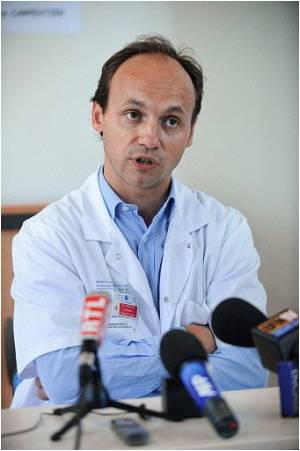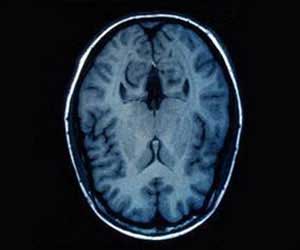Glioblastoma is the most common aggressive primary brain tumor, and despite advances in standard treatment, the median survival is about 15 months.

"In recent years, researchers and the public have begun to realize the role that the immune system plays in both cancer prevention and treatment," says senior author Craig Hooper, Ph.D., a Professor in the Department of Cancer Biology at Thomas Jefferson University. "The immune system has great potential for helping fight cancer. This study helps give us a roadmap for future brain cancer vaccines."
The study reports on the results of a second phase 1 clinical trial, after the first phase 1 trial in 2001 lead by David Andrews, M.D., Professor of Neurological surgery at Jefferson, saw tumor shrinkage in eight out of 12 patients tested. The vaccine consisted of portions of the patient's own tumor. Specifically, samples of the patients' tumor were removed during surgery, treated overnight with a drug, and packaged inside a diffusion chamber which was then inserted into the abdomen providing immune cells easy access. The drug in this therapy - antisense oligodeoxynucleootides (AS-ODN) - knocks down IGF-R1, a receptor shown to drive tumor growth and metastasis. Research had shown that blocking this receptor with agents like AS-ODN could cause the tumor cell to self-destruct.
In the original trial, the researchers thought that the molecules from the patient's self-destructing tumor were released through pores in the dime-sized chambers and activating the immune system. Once activated in the abdomen, the immune cells would travel to the brain where they would kill the remaining tumor cells that were not removed by surgery. "But no one had really examined the material coming out of the chambers to find out what was activating the immune response," said Dr. Hooper.
First author Larry Harshyne, Ph.D. an Assistant Professor in the Department of Neurological Surgery at Jefferson, had previously done research on antigen presentation. One form of cell-based antigen are exosomes, small membrane-bound particles that bud off of cells and can activate the immune system. Because exosomes are small enough to pass through the chamber's pores, the researchers tested for their presence in the material that seeped out of the sheaths in the lab. They showed that not only were exosomes present, but that they were released from the chambers in a slow and continual stream, providing an ongoing source for immune-cell activation. The researchers also showed that when exosomes were harvested and given to mouse models of brain tumor, the exosomes alone slowed tumor growth.
Finally, the researchers showed that the AS-ODN molecules used to kill cancer cells also activated the immune system. "We think that the AS-ODN treatment changes the quantity or quality of the exosomes released by the tumor cells," says Dr. Harshyne.
Advertisement
In the next phase of clinical trials expected to open in January of 2015, the researchers plan to treat patients immediately after their first brain surgery for tumor removal, before chemotherapy is given. "We expect these patients will stand to benefit most from the treatment," says Dr. Hooper. In addition, the researchers are looking for ways to strengthen the immune response to the vaccine to make it even more effective.
The authors report no conflicts of interest.
For more information, contact Edyta Zielinska, 215-955-5291, edyta.zielinska@jefferson.edu.
Source-Newswise















